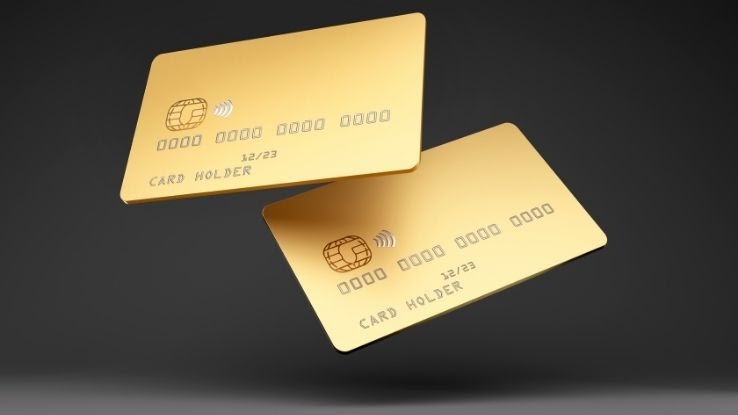Your Continuing Record of Credit Usage is Called Your Credit History Score Rating Pattern

Are you looking to make a big purchase but not sure which credit card to go for? To ensure a sustainable debt amount, you need to identify a credit card that offers you the lowest interest rates for a longer period. This article will discuss the best zero to low-interest credit cards you should own. Read on.

The interest rate, or APR (annual percentage rate), is the percentage of interest that a credit card company charges you on your card's debt. Your credit card score and the prime rate, controlled by the state of the economy, are the main factors that influence your interest rate. The higher your credit score is, the better the interest rates you get.
Your interest rate becomes very dynamic if you have an average credit score. A good interest rate for a credit card should fall under the suggested average interest rate in America, which currently sits near 16.30%, according to the Federal Reserve. Anything lower than this APR is considered a good interest rate. Members of Credit Unions often get the best interest rates as they may qualify for interest rates as low as 6% from their respective unions.
Best Low-Interest Credit Cards

Sometimes it's not always possible to pay off your credit card's monthly installments in full. This means you will carry a balance to the following month. The higher the interest rate, the more money added to that remaining balance each month.
If you often find yourself carrying a balance forward, a low-interest credit card will allow you to save money and clear your balance faster. Below is a list of the best low-interest credit cards.
- Titanium Rewards Signature Card from Andrews Federal Credit Union
The Titanium Rewards Signature Card is a $0 annual fee credit card with a low-interest rate of 9.49%-16.30% variable APR. The card charges 2% interest or $10 (whichever is higher) on balance transfers and 2% or $10 (whichever is higher) on cash advances. This card is best to transfer a balance from a higher interest credit card.
- Discover it® Cash Back Credit Card
With an interest rate of 11.99%-22.99%, Discover it® Cash Back Credit Card is a great option. It has a $0 annual fee, a 0% introductory APR on purchases for the first 14 months, and a 3% intro offer on a balance transfer fee (5% for future transfers).
- BankAmericard® Credit Card
BankAmericard® Credit Card offers a regular interest between 12.99%-22.99%. It has a $0 annual fee and 0% intro APR on purchases for 18 billing cycles and any balance transfers done within 60 days after activating the card (then 3% interest on balance transfers). What's more, no additional APR is charged for late payments.
- Bank of America® Unlimited Cash Rewards Credit Card
Bank of America® Unlimited Cash Rewards Credit Card offers a 13.99%-23.99% regular APR. Members enjoy no annual fee in addition to a 0% introductory APR for the first 15 billing cycles on purchases and balance transfers made within the first 60 days. After this, the interest rate for balance transfers is 3%.
- Discover it® Student Cash Back
The Discover it® Student Cash Back Card doesn't require a credit score, making it best for students who want to build their credit and earn cashback. The card offers a regular APR ranging between 12.99%-21.99%. It has no annual fees and 0% APR on purchases, and a 10.99% introduction APR on balance transfers for the first six months.
How Can a Credit Card Have Zero Interest?

A zero interest credit card offers no interest on purchases, balance transfers, or both for a more extended limited period–usually six to 21 months. You will not be charged any interest you make on purchases during this period, and some cards also won't charge for balance transfers. But once the 0% APR introductory period ends, the regular APR, which is usually higher than that of low-interest rate cards, applies, depending on the card's terms.
Low-interest credit cards with a 0% APR introductory period can be used like zero-interest cards by ensuring that you don't carry any balance forward month to month or by paying off your debt within the card's 0% APR period. If you do this, you won't be charged any interest.
Zero-Interest Credit Card Options

A zero-interest credit card is suitable for debtors who want to make a big purchase and can clear the debt within the 0% APR duration. It's also an excellent option for people who wish to consolidate their credit or transfer a balance from a high-interest card. You will only be charged for your original charged amounts if you pay them off during the introductory period. Here are the best zero interest credit cards.
- Citi Simplicity® Card
The Citi Simplicity® Card offers a 0% intro APR for 21 months on balance transfers and 12 months on purchases. Then your regular interest rate will fall between 14.74%-24.74%. The card's annual rate is $0.
- Chase Freedom Unlimited
The Chase Freedom Unlimited credit card is a $0 annual fee card with a long intro 0% APR of 15 months. After the introductory APR ends, a 14.99%-24.74% applies for all purchases and balance transfers.
- Wells Fargo Reflect VisaSM Credit Card
Wells Fargo Reflect Visa Credit Card gives you a 0% initial APR and free balance transfers for 21 months. After that, you'll be charged a 12.99%-24.99% regular APR on purchases and up to 5% ($5 minimum) for balance transfers.
- U.S. Bank Visa® Platinum Card
The U.S. Bank Visa® Platinum Card is a $0 annual fee card that offers a 0% intro APR for 20 billing cycles, followed by a variable APR of 14.49%-24.49% on purchases and balance transfers. However, it doesn't include perks and benefits apart from the lengthy no-interest period.
- Blue Cash Everyday® Card from American Express
The Blue Cash Everyday® Card from American Express offers a 0% interest rate on purchases for your first 15 months, then a regular rate of 13.99%-23.99%. With this card, you also enjoy a $0 annual fee.
Things to Consider when Choosing a Low-Interest Credit Card

Before choosing a low-interest credit card, there are some things you should consider:
- Credit score: the lower your credit score, the higher your interest rate. If your credit score is below average, consider getting a card that allows you to build your credit score.
- Low-interest or 0% APR credit card: determine whether you need a zero-interest card, low-interest credit card, or both. If you anticipate that you are likely to carry a balance for a long time, then a low-interest card is a better pick. If you are going for a big purchase and are likely to settle your debt within a zero APR period, then choose a zero-interest credit card with a long free period to help you spread out your debt.
- APRs: You want a card with the lowest APR possible. Also, check other charges like annual fees and balance transfers. Get a card with the fewest fees you can.
- Rewards and benefits: Choose a card with great perks like cash back on purchases, phone coverage, or other rewards.
- Fine print: Be sure to read and understand the terms and conditions. Learn about the charges for late payments and APR penalties. You don't want a card with high fees.
Source: https://www.askmoney.com/credit-cards/best-interest-rate-for-a-credit-card?utm_content=params%3Ao%3D1465803%26ad%3DdirN%26qo%3DserpIndex&ueid=37a4ca92-df1b-4265-b656-0e43def699e7
Belum ada Komentar untuk "Your Continuing Record of Credit Usage is Called Your Credit History Score Rating Pattern"
Posting Komentar